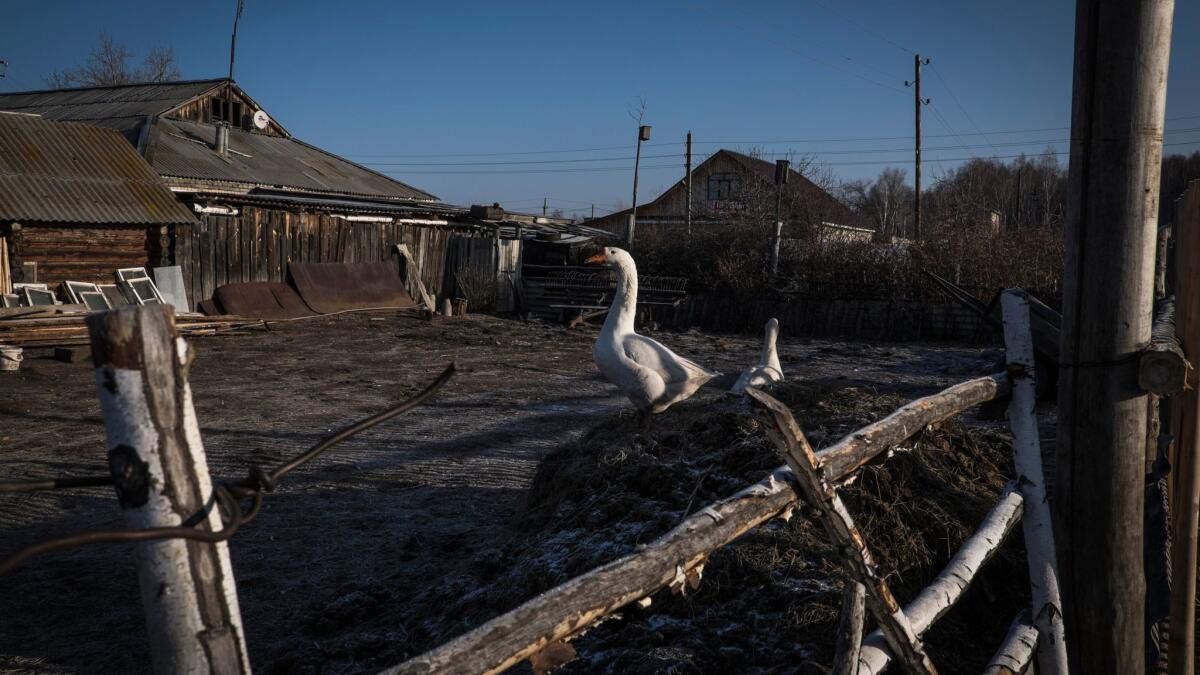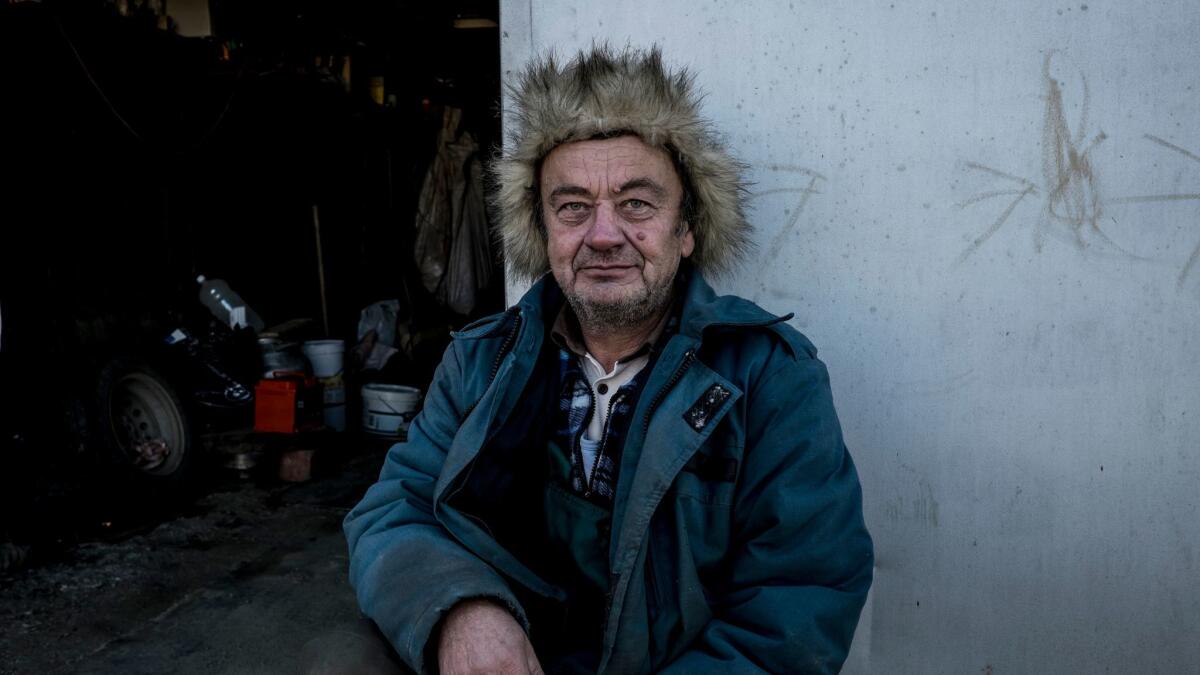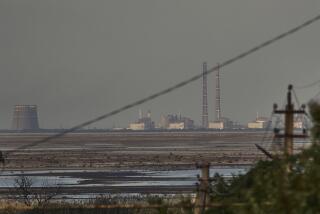Radiation levels near this Siberian village were 1,000 times above normal last fall. But no one worried much

Boris Salomatin has lived his entire 60 years down a dirt road in the tiny village of Khudaiberdynsk, a few miles from the entrance to the massive Mayak nuclear fuel reprocessing complex.
The year he was born, this Siberian landscape on the edge of the Ural Mountains bore the brunt of one of the world’s worst nuclear accidents. On Sept. 29, 1957, decades before Three Mile Island, Chernobyl and Fukushima entered the lexicon of landmark nuclear disasters, a buried cache of liquid radioactive waste from Mayak exploded. More than a quarter-million people were exposed to radiation, and nearly two dozen villages, home to more than 10,000 people, had to be vacated forever.
From March 1949 to November 1951, environmental activists have learned, radioactive waste was poured directly into the nearby Techa River, and nearby lakes were inundated with pollution as well.
The Soviet government kept the accident secret until 1976, when a dissident published an article about it in New Scientist magazine. By that time, thousands of people who had remained living in the area around the plant had fallen ill with cancer or given birth to children with birth defects.
Salomatin, a retired welder, has never spent too much time worrying about it, because what would be the point?
“What are you going to do?” said Salomatin, who grew up in the shadow of the sprawling nuclear plant built in the 1940s as the base for the former Soviet Union’s nuclear weapons program. “We live like we live. I swim in those lakes all the time. I just don’t swim too deep.”
Yet over the last few months, residents here have been reminded that the threat posed by Mayak, operated inside an officially “closed” city that is off limits to most outsiders, has never really gone away.
In October, European radiation safety agencies detected a cloud containing a radioactive isotope, ruthenium-106, that could be traced to somewhere near Mayak.
The Russian government and its nuclear agency issued a series of denials. Then on Nov. 21, nearly two months after the French and German safety agencies said they had first detected the cloud over Europe, Roshydromet, Russia’s meteorological agency, confirmed that levels of ruthenium-106 had been recorded in late September at levels almost 1,000 times higher than normal in Argayash and 440 times higher in Novogorny, two frequent testing spots within 10 miles of Mayak.
That meant alarming levels of radiation not far from where Salomatin lives, halfway between Argayash and Novogorny, on the road to Ozersk, the closed city.

There’s not much to the town here. In the winter, the school’s soccer field is too frozen to play on. Stray dogs bark and roam outside the fences surrounding compact houses and gardens.
A small store carries basic staples of potatoes, onions and toilet paper. It stands across from the House of Culture, a remnant of the former Soviet Union, where community events were once held. Today, the faded paint peels off the exterior walls. Cars bounce up and down as they swerve to miss potholes in the hard, dirt road. Salomatin and his wife share a small apartment in a two-story building on one of the village’s two main dirt roads.
Even now, Salomatin says he’s not convinced there has been any particular danger; most of the alarm, he says, is being spread by the “yellow press.”
“If someone farts in this side of the village, the yellow press will report that it was a radioactive dust cloud coming from the other side of the village,” he said as he drew on his cigarette.

To prove his point, Salomatin brought out a large plastic bottle full of homemade raspberry preserves. He had picked the berries himself not far from here, he said as he unscrewed the top, tipped the bottle back and let the liquid pour into his mouth.
Gosman Kabirov, an environmental activist from the nearby town of Chelyabinsk, poured a capful of the raspberry syrup onto a piece of cardboard and held his radioactivity dosimeter up to it. The numbers flickered and rested on 12, an acceptable level of radiation, Kabirov said.
Rusatom, the Russian state nuclear energy company that owns Mayak, continues to deny that its facility could be the source of the cloud that drifted over Europe in the fall.
Test samples from Mayak showed “no presence of ruthenium-106,” a Russian interagency investigative commission said in a December report, suggesting that the emissions could have come from a satellite that burned as it fell from the sky.
The French nuclear safety agency rejected that hypothesis, saying there was no record of a satellite falling to Earth during the period of the radioactive cloud’s detection over Europe.
Still, Russian officials seem determined to dispel any fears. Shortly after the news broke of the unusual levels of ruthenium-106, Chelyabinsk’s head oncologist, Andrei Vazhenin, said there was no public health danger; ruthenium-106, he said, isn’t a “pure carcinogenic.”
He had a suggestion for anyone who was worried about their health: They should stay indoors, he said, and “watch football and drink beer.”
Twitter: @sabraayres
Ayres is a special correspondent.
More to Read
Start your day right
Sign up for Essential California for news, features and recommendations from the L.A. Times and beyond in your inbox six days a week.
You may occasionally receive promotional content from the Los Angeles Times.






